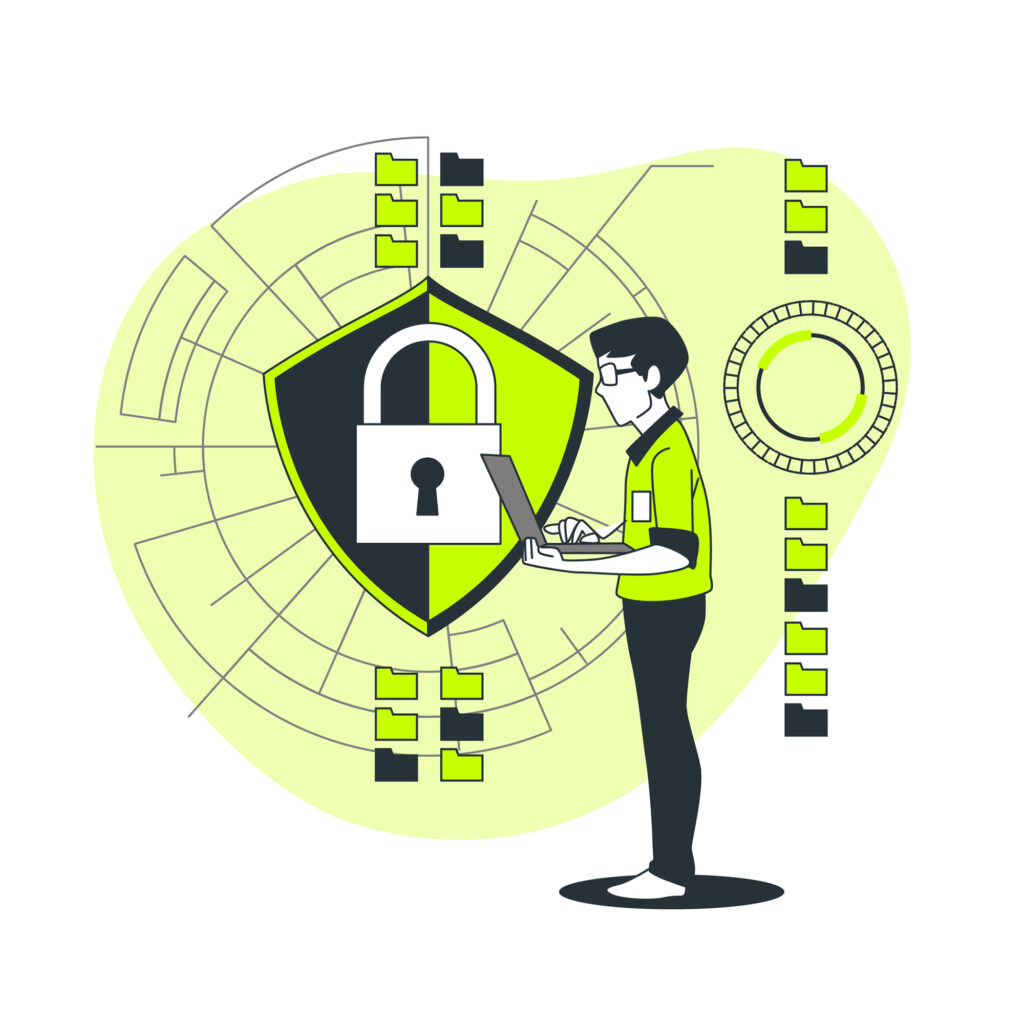Why Azure Network Security Best Practices Matter?
Azure Network Security Best Practices play a huge role in effective system management. Your Azure network security can’t be overemphasized when it comes to battling against cyber threats and unauthorized access to resources and workloads. As companies are progressively moving to cloud services such as Azure to store important data and run core applications, the potential risks in case of poor security are also going up. Safety technology can both guard against data breaches and prevent them, which are the principle causes of the financial losses or the reputation of the organization being damaged.

Full security is achievable when network segmentation, robust access controls, and continuous monitoring are included in the defense system. Using the features Azure Security Center and Azure Active Directory, the native security capabilities of Azure that manage vulnerabilities and authorization can be beneficial. In addition to this, employing security tools for detection and response may trigger instant alerts, that can then be used to fight off incoming threats.
Refreshed security policies and protocols of the company with the growth of the threat landscape are also very essential. By implementing measures to secure the Azure network, businesses can not only improve operational performance but also secure critical data and win the trust of customers and stakeholders. Primarily, developing protection measures of Azure security is not the compliance itself, it is about making the system stronger and more adaptable for growth and innovation.
Implement Strong Network Controls

Centralizing core network management is key to maintaining a secure environment within your Azure infrastructure. This approach not only streamlines operations but also enhances security across your network. Key actions to consider include:
Core Functions Management:
Centralizing the control of essential functions, such as ExpressRoute, virtual network, and subnet provisioning, as well as IP addressing, is crucial. This allows for more efficient operations and ensures that security policies are consistently enforced across the entire network, minimizing potential vulnerabilities and configuration errors.
Security Elements Governance:
It is essential to manage network security components, including network virtual appliances, from a centralized location. This governance ensures that security measures are uniformly applied and monitored, reducing the risk of discrepancies that could be exploited by cyber threats.
Unified Monitoring:
Implementing a common set of tools to monitor both network and security aspects offers clear visibility into operations. This integrated approach not only improves reliability but also significantly reduces the likelihood of errors in your security strategy. By maintaining a centralized management framework, organizations can enhance their overall security posture while simplifying network operations, ultimately supporting better resource allocation and risk management.
Logically Segment Subnets

Effective subnet management is essential for controlling traffic flow and enhancing overall security within your network infrastructure. Implementing best practices in this area helps mitigate risks and streamline operations. Here are key strategies to consider:
Avoid Broad Allow Rules:
It is crucial to refrain from setting allow rules that encompass wide IP ranges, such as 0.0.0.0/0. These broad rules can create a false sense of security and inadvertently expose the network to potential attacks. Instead, adopt a more granular approach to access control.
CIDR Subnetting:
Utilizing Classless Inter-Domain Routing (CIDR) notation to create smaller, more manageable subnets allows for better organization and control of resources. This method enables you to allocate IP addresses more efficiently, reducing wastage and improving the overall structure of your network.
Network Security Groups (NSGs):
Employing NSGs is vital for establishing robust access controls between subnets. These groups help protect against unwanted traffic by allowing the creation of specific rules based on source IP, destination IP, ports, and protocols, enhancing security.
Avoid Small Networks:
Ensure that virtual networks and subnets are adequately sized to avoid management challenges. Proper sizing maintains flexibility and supports efficient traffic management, facilitating smoother operations and improved security across the network.
Adopt a Zero Trust Approach

The Zero Trust model emphasizes strict access controls and continuous verification to enhance security across your network. By adopting this framework, organizations can effectively mitigate risks and protect sensitive data. Key principles of the Zero Trust model include:
Always Verify:
This foundational principle underscores the need to assume that threats can arise from both internal and external sources. Organizations should continuously validate the security status of users and devices before granting access to resources. This proactive approach helps identify potential threats early and reinforces overall network security.
Least-Privileged Access:
Implementing policies that provide users with only the necessary access required to complete their tasks is crucial. This access is determined based on various factors, including identity, device, location, and risk assessments. By adhering to the principle of least privilege, organizations can significantly reduce the attack surface, minimizing opportunities for unauthorized access and potential data breaches.
Multi-Factor Authentication (MFA):
To strengthen security further, organizations should employ Multi-Factor Authentication. MFA requires access requests to be verified through multiple methods, such as a password combined with a temporary code sent to a mobile device.
This layered security measure adds an additional barrier against unauthorized access, ensuring that even if credentials are compromised, unauthorized users cannot easily gain access to critical systems. By implementing these principles, organizations can create a more resilient security posture.
Implement Network Isolation and Segmentation

Network isolation is essential for safeguarding resources from external threats, ensuring that sensitive data and applications remain protected. Implementing effective isolation strategies can significantly reduce vulnerabilities and enhance overall security. Here are some key practices to consider:
Obscure Resources:
Employing network isolation techniques helps keep resources hidden from public access. By obscuring resources, organizations can significantly reduce their exposure to potential attacks, making it more challenging for malicious actors to identify and target critical assets.
Segment the Network:
Breaking the network into smaller, isolated segments with security controls at each boundary is crucial. This segmentation minimizes the potential damage in the event of a breach, as attackers would be confined to a limited area rather than gaining access to the entire network. Each segment can have tailored security measures that address specific risks and compliance requirements.
Hub-Spoke Topology:
Utilizing a hub-and-spoke architecture can centralize firewall protection while optimizing costs and improving traffic management. In this model, the hub serves as the central point for security enforcement, enabling streamlined monitoring and management of network traffic flowing between the hub and its spokes.
Private Endpoints:
Leveraging Azure Private Link allows organizations to securely connect to Azure services via a private network. This ensures that sensitive data remains off the public internet, significantly enhancing security and reducing the risk of interception by unauthorized parties. By implementing these strategies, organizations can create a more secure and resilient network environment.
Secure Network Traffic

Protecting data in transit is critical to maintaining confidentiality and integrity:
- Use TLS: Ensure all network data is encrypted using Transport Layer Security (TLS) to safeguard communication.
- Network Security Groups (NSGs): Use NSGs to control inbound and outbound traffic based on defined rules, improving network access management.
- Azure Firewall: Deploy Azure Firewall to utilize advanced security capabilities, such as Layer 7 filtering, threat intelligence, and intrusion detection/prevention systems (IDS/IPS).
- DDoS Protection: Enable Azure DDoS Protection to defend against distributed denial-of-service attacks, preventing resource overload and service disruptions.
Monitor and Analyze Network Traffic
Continuous monitoring is essential for detecting and addressing potential threats:
- Network Watcher: Use Azure Network Watcher to track network traffic, generate flow logs, and troubleshoot connectivity problems.
- Azure Monitor and Microsoft Sentinel: Integrate these tools for centralized logging and threat detection, enabling proactive security management.
- Traffic Analytics: Employ Traffic Analytics to gain insights into network performance and security, helping to identify vulnerabilities and optimize network configurations.
Additional Best Practices
- Use Azure Virtual Networks: Set up isolated networks to segment resources and manage access efficiently.
- Implement Azure Private Link: Securely connect to Azure PaaS services via private connections, safeguarding data from external threats.
- Regularly Review Security Policies: Continuously evaluate and update security policies and configurations to stay ahead of evolving threats and meet compliance standards.
[Want to learn more about Azure Network Security Best Practices? Click here to reach us.]
Conclusion
Securing your Azure network requires a comprehensive approach that includes strong access controls, network segmentation, traffic encryption, and continuous monitoring. By adopting best practices such as the Zero Trust model, leveraging tools like Azure Firewall and Network Security Groups, and utilizing network isolation techniques, you can significantly reduce your exposure to cyber threats.
Regularly reviewing and updating your security policies ensures your network remains resilient against evolving risks, while features like DDoS protection and private endpoints offer additional layers of defense. For expert guidance and ongoing support, Bobcares‘ Azure support services can help you implement these best practices, monitor your network, and ensure your Azure environment remains secure and optimized. A proactive, well-structured security strategy is essential to safeguarding your resources and maintaining the integrity of your Azure environment.







0 Comments